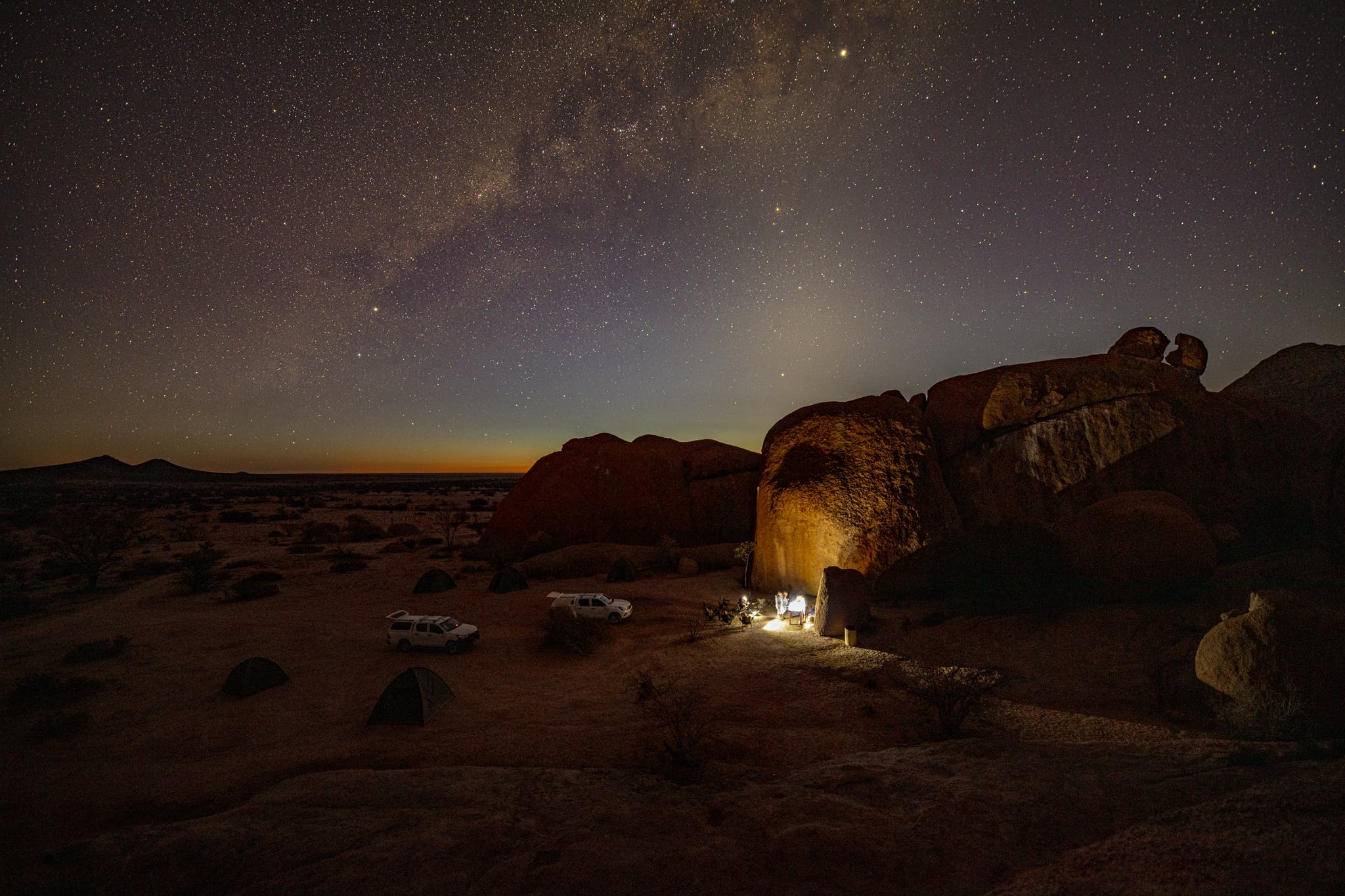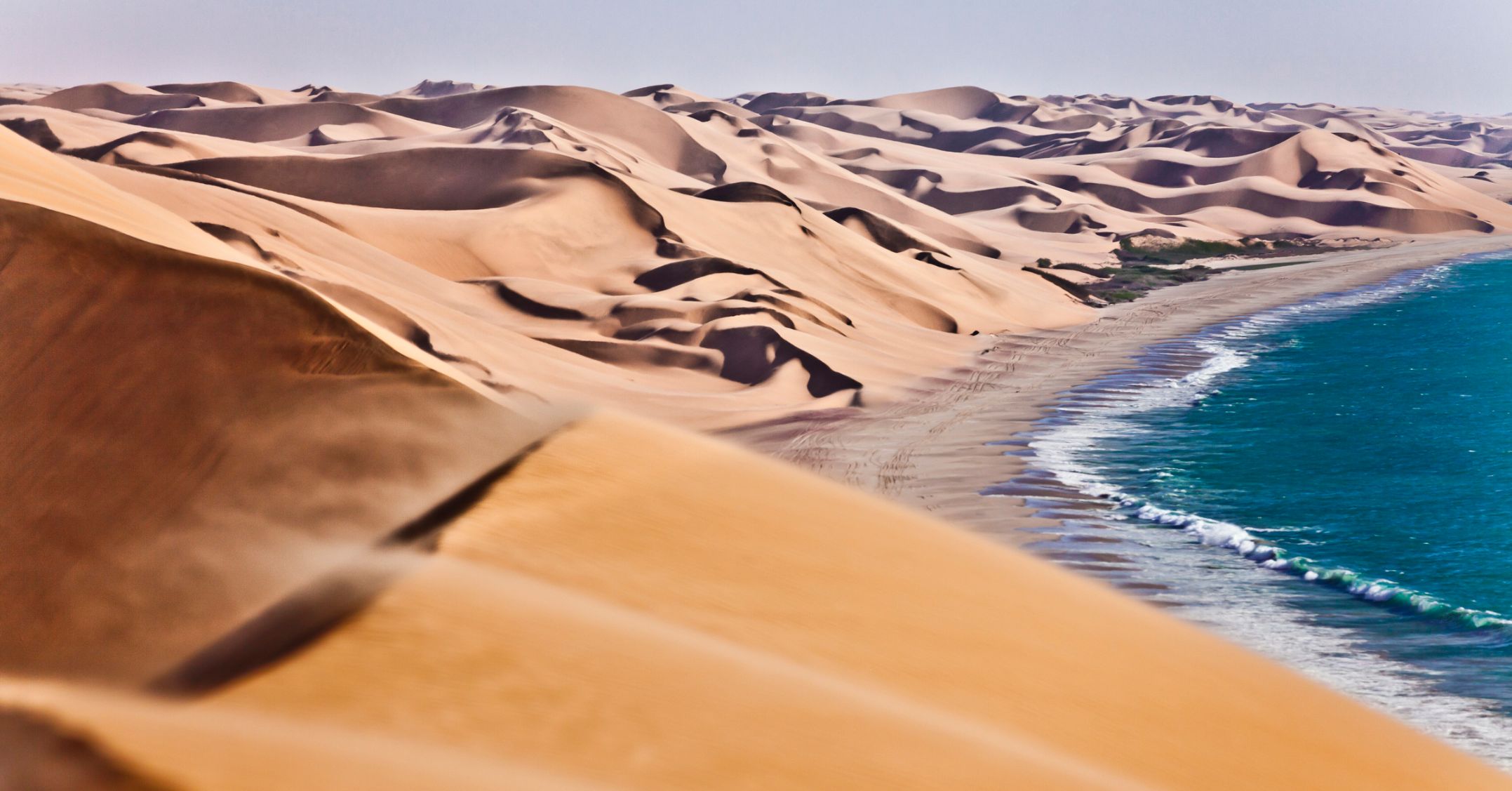
Namibia holidays can range from arid desert fat biking to watching zebra and elephants grazing on lush African plains. Thanks to the Sports Relief 100km challenge in Namibia in March 2020, more people than ever are going to be opening their eyes to the adventure, cycling and hiking opportunities in Namibia as well. There’s nothing like a lycra-clad, motivational Rob “Judge” Rinder to make you want to go on an adventure, after all. Seriously though, holidays in Namibia offer truly fantastic variety.
We’re all for anything that raises awareness of an amazing, but relatively under-the-radar country like Namibia. We absolutely love the place. The remarkable sand dunes. The mountains which rise up from the desert floor. Wildlife as beautiful and humbling as anywhere in the world. Namibia is an adventure playground. Hence why we run an eight-night cycling adventure which takes you through the Namib Desert and along the famous Skeleton Coast – which as “the world’s largest shipping graveyard”, is exactly as pirate-y as it sounds.
So, whether you’ve been inspired by Nick Grimshaw and Frankie From-the-Saturdays (not her actual surname, believe it or not), or have just been eyeing up a trip to Namibia or an exploration of the coastlines of Africa, for some time, we hope this guide can be of use.
We’re aiming to give you an easily digestible guide to the country of Namibia. We’ll provide you with all the basics, exploring the terrain, regions and best places to go cycling and hiking.
Namibia Map & Capital | Where is Namibia?
Capital of Namibia: Windhoek
Namibia Population: 2.534 million
Time in Namibia: GMT+2
Where is Namibia? It’s in the south of Africa. The country is bordered by South Africa. Namibia actually only got independence from South Africa in 1990, following the Namibian War of Independence. To the east, Namibia is bordered by Botswana, to the north-east Zambia, and to the north, Angola. Like most African countries, Namibia is warm and dry, with an average day temperature of 30° C in January to 20° C in July.
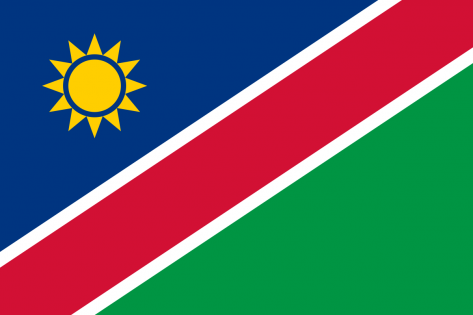
The population of Namibia is approximately 2.5 million, with the biggest population in the capital Windhoek in the Khomas region. 325,858 people live in Windhoek. 55.2% of the population in Namibia is urban, with the next biggest cities being Rundu in the Kavango region and Walvis Bay and Swakopmund in Erongo, on the coast.
The total land area of Namibia is 823,290 km². That’s pretty big. For comparison, the United Kingdom is 242,495 km², and the Ukraine, the second biggest country in Europe in terms of size is 603,628 km². The reason for the low population:land ratio is because so much of Namibia is taken up by the Namib Desert. Namibia is actually one of the least densely populated countries in the world.
The time zone in Namibia is GMT+2. That puts the country two hours ahead of the United Kingdom and on the same time as European countries like Finland, Estonia, Romania and Greece. The currencies used include both the Namibian dollar (NAD) and South African rand (ZAR), the Prime Minister of Namibia is Saara Kuugongelwa and the President is Hage Geingob.
What is Namibia Actually Like?
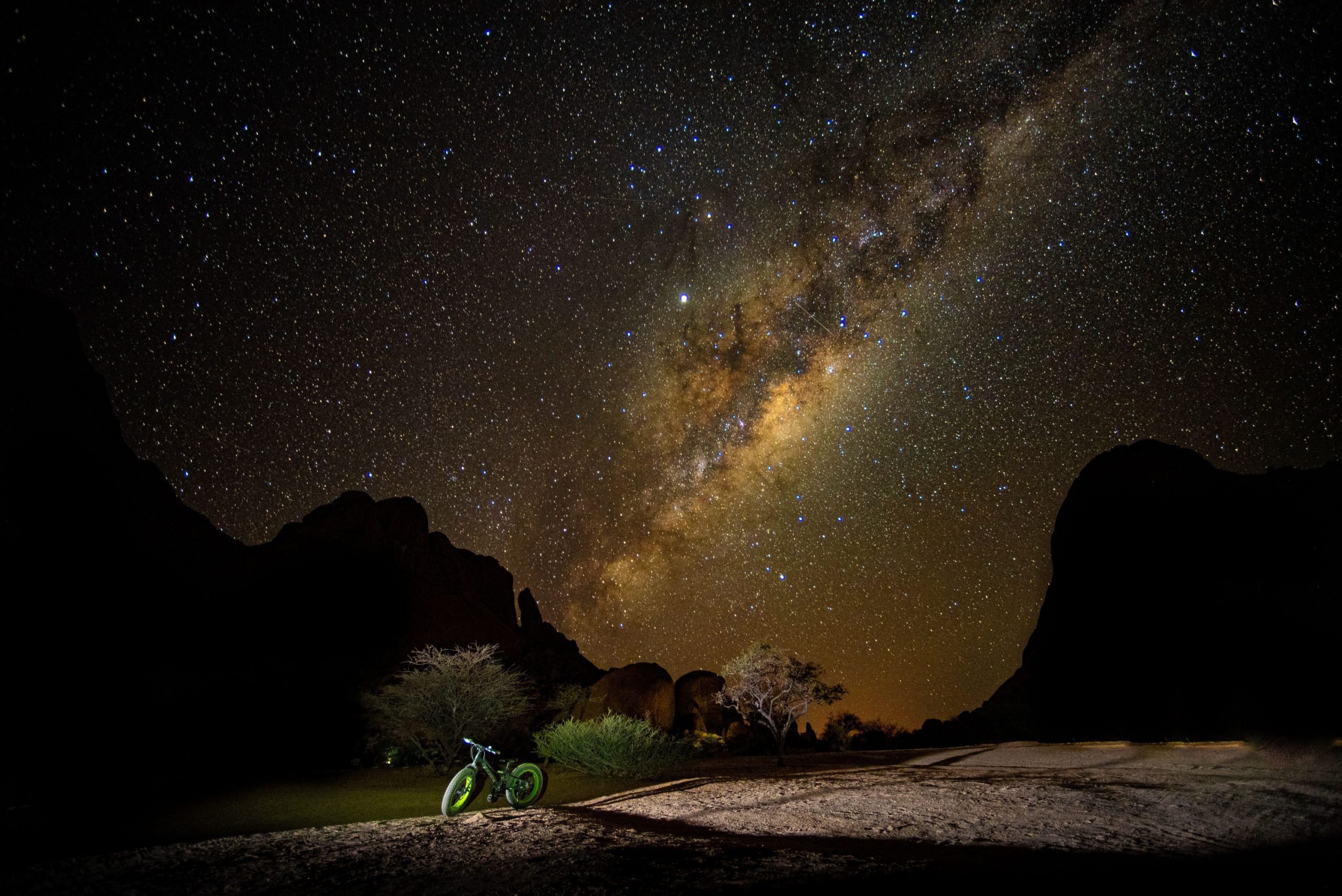
If you have heard of Namibia before, it’s perhaps through the Namibia War of Independence. Either that, or you might’ve seen the country pop up in the Rugby World Cup. Or, you’re just a geography whizz, of course. But not a lot of people actually know a lot about the terrain, climate or landscapes of Namibia.
Indeed, Namibia holidays and people travelling to the country for adventure is still a pretty recent thing. As more people learn about the layout of the country, though, they realise how great a holiday in Namibia could be. So this section of the article is about doing exactly that.
> Read the day-by-day itinerary for our eight-night cycling adventure in Namibia
The geography of Namibia can be summed up by five areas – the Central Plateau, the Namib Desert, the Great Escarpment, the Bushveld and the Kalahari Desert.
Being sandwiched between the Namib and Kalahari deserts, Namibia has the least rain of any country in sub-Saharan Africa. Now, let’s look at each of those regions in a bit more detail.
The Namib Desert
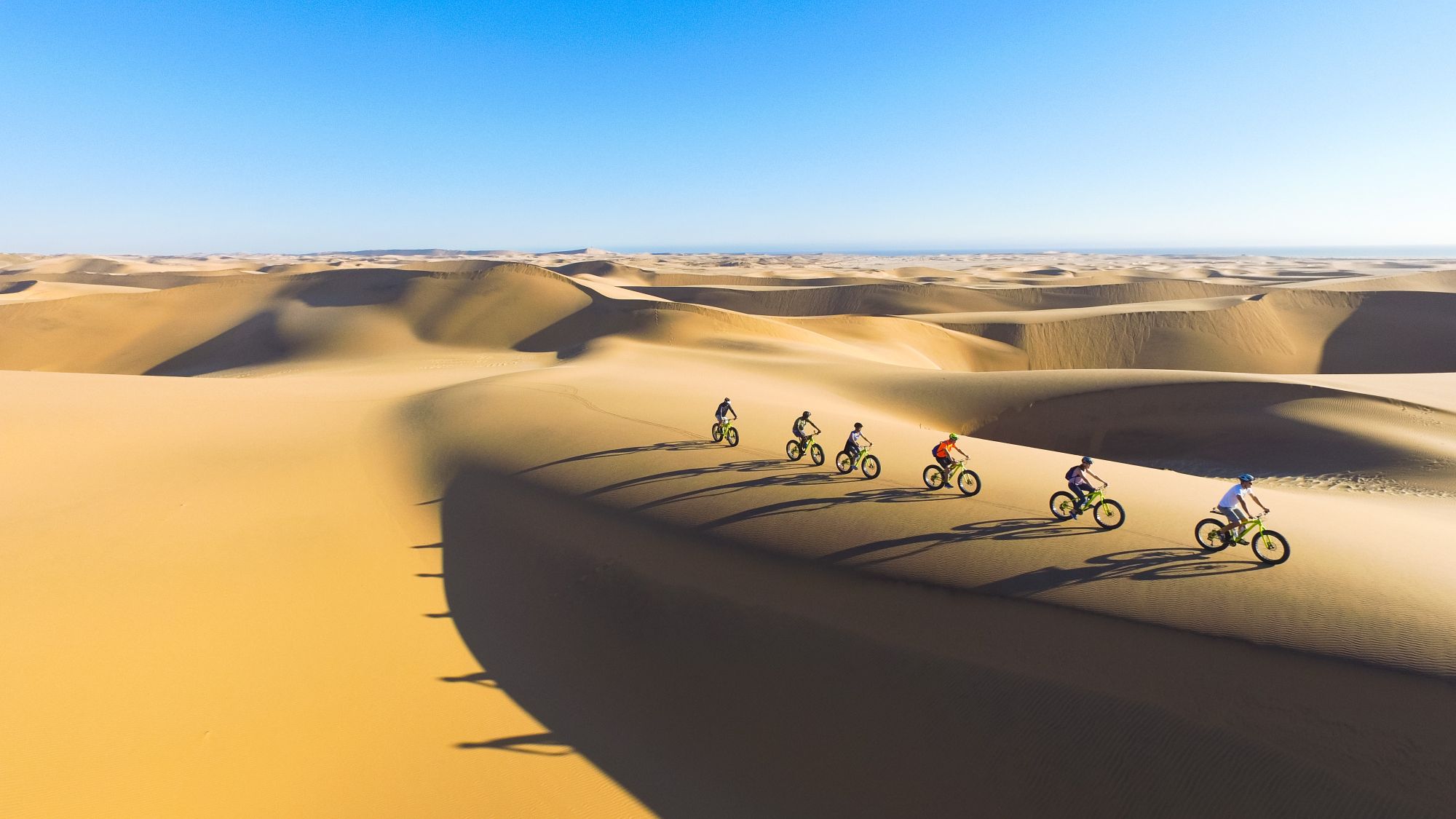
If Namibia were in Europe, it would be the second largest nation by land area size. But the population of the country is only 2.5 million, about 25 times less than in the much smaller space of the United Kingdom. That’s largely because so much of Namibia is taken up by the intensely dry, arid Namib Desert. The desert stretches for more than 2000 kilometres.
“The Namib is almost completely uninhabited by humans, and is home to more endemic species than any other desert in the world”
Scientists believe the Namib Desert may be the oldest desert in the world. It still contains some of the driest areas on planet Earth. There’s plenty of water nearby though – the entire border of the Namib runs along the Atlantic Coast, with the clash of conditions between the desert and ocean creating unpredictable weather and fog that can be a nightmare for sailors. Hence one of the best known areas of the Namib Desert is named the ‘Skeleton Coast’, courtesy of the fact that rusted hulls line the beaches.

The Namib Desert: Where to Visit
There’s also a lot of adventure to be had on a Namibia holiday in the Namib desert. From riding a fat bike down a sand dune – some of the tallest sand dunes in the world – to surfing. The aforementioned Skeleton Coast is actually known as one of the best surf spots in Africa. Just watch out for any rogue ships!
The Namib is almost completely uninhabited by humans. And it’s home to more endemic species than any other desert in the world. So you get a truly wild experience and the possibility is there of seeing lions, elephants and more.
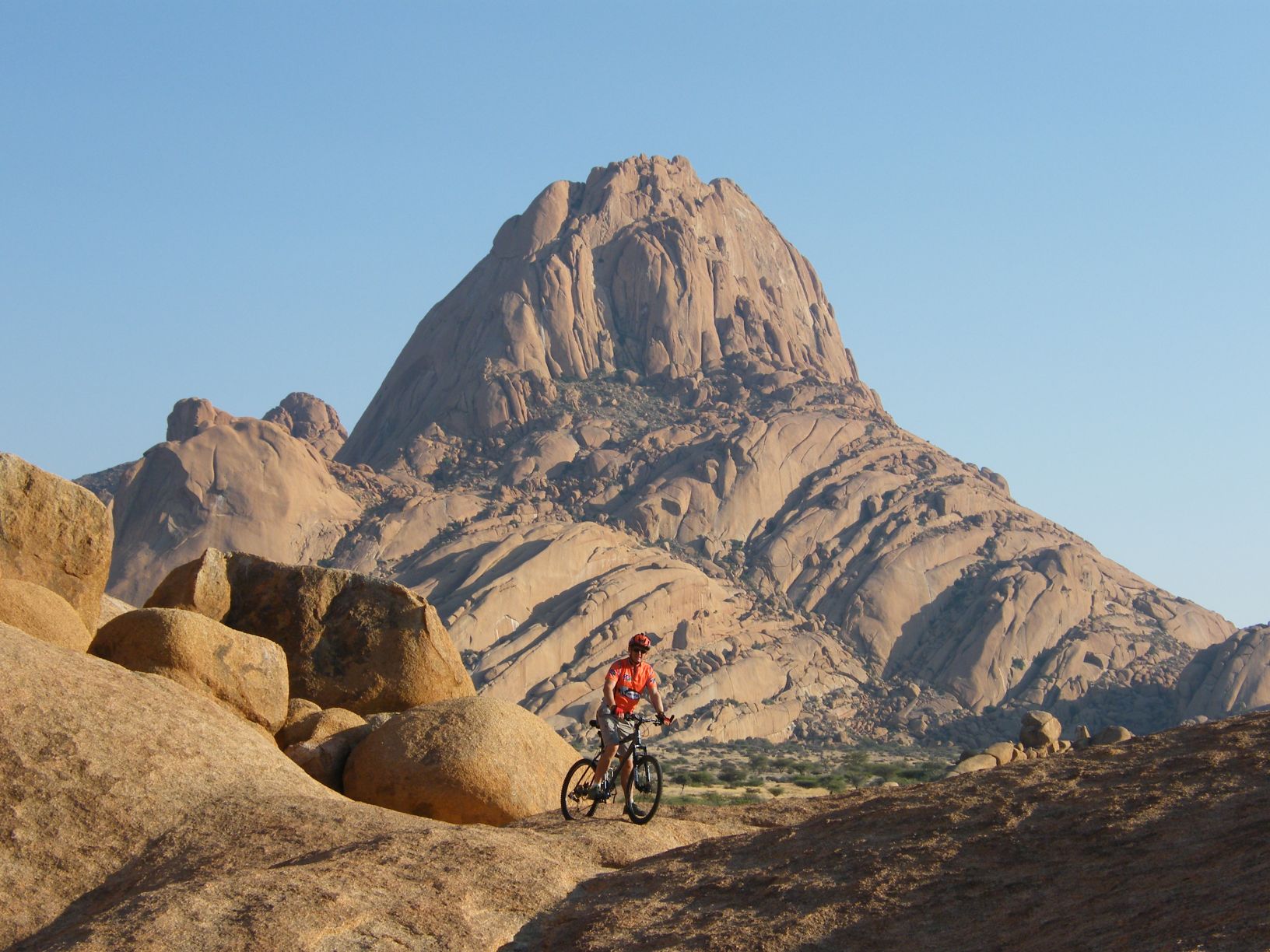
One notable spot is the Spitzkoppe. Known as the “Matterhorn of Namibia”, the granite on the mountain is more than 120 million years old. The highest outcrop preaches 5,669ft (1,728m) above sea level. Ascending to a peak would require proper mountaineering, but you can cycle right up to the mountain. The Spitzkoppe is where the “Dawn of Man” sequences in Stanley Kubrik’s 2001: A Space Odyssey were filmed. Stanley chose wisely – examples of bushmen artwork can be seen around the mountain.
Swakopmund, the coastal adventure capital of Namibia and a city four hours from Windhoek, is also situated in the Namib Desert. Dune 25, in the salt pan of the Sossusvlei area of the Namib Desert, being a popular hike nearby.
From cycling, surfing and hiking on the Skeleton Coast to seal-spotting at Cape Cross, the Namib Desert is full of adventure. We say “seal spotting”, but it’s really not hard to spot the seals. There are literally thousands of them. As far as Namibia holidays go, the Namib desert is up there with the best places to visit. It’s certainly got our seal of approval!
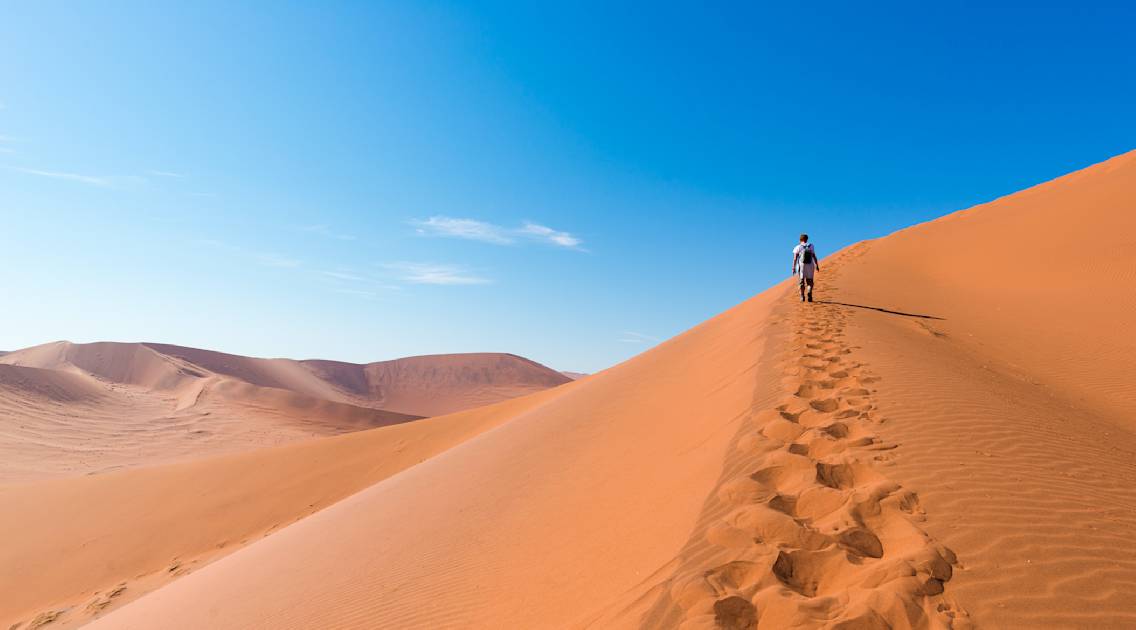
The Central Plateau
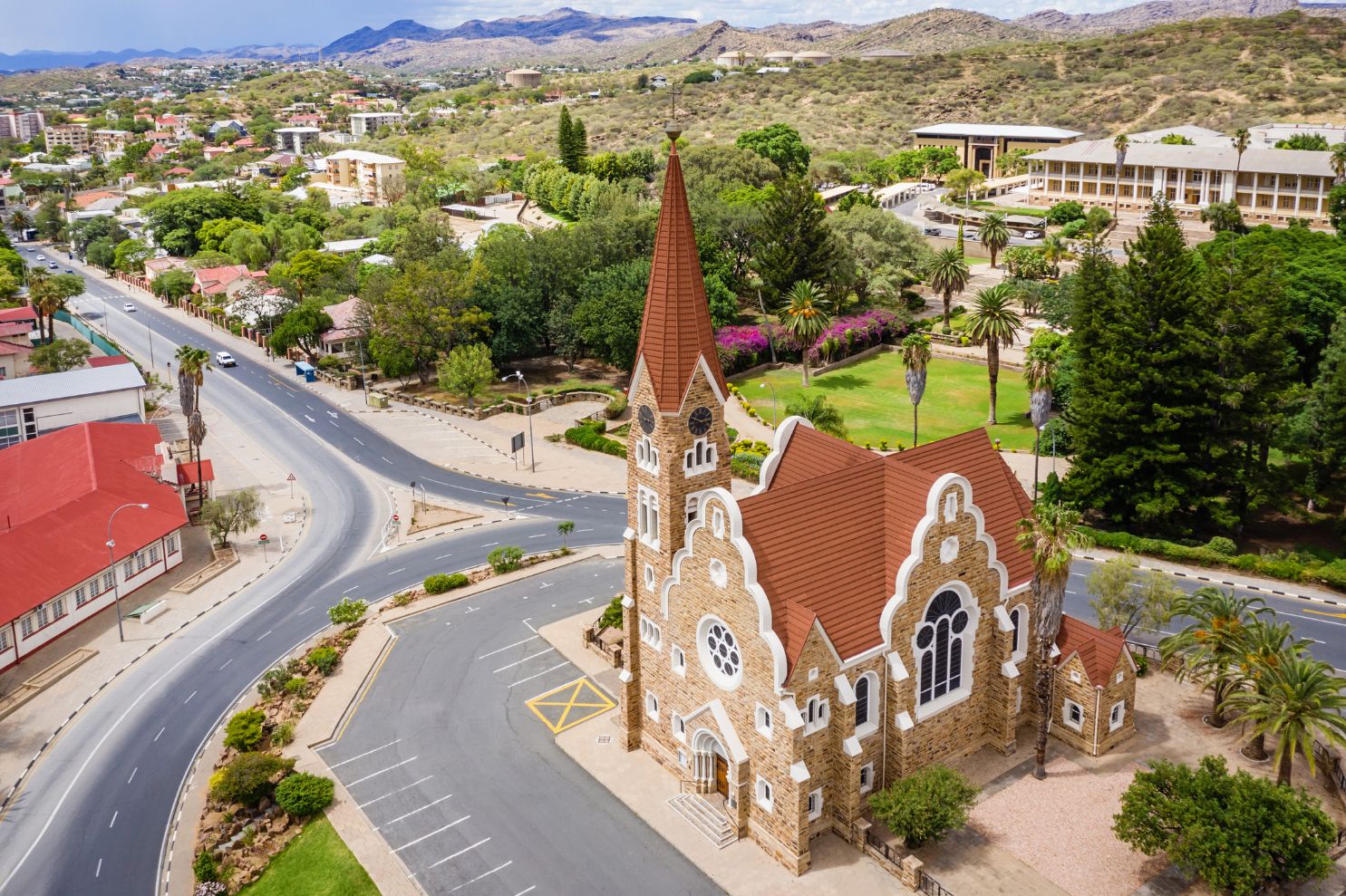
Bordering the Great Escarpment to the west and the Kalahari to the east, the Central Plateau is home to the capital city of Namibia – Windhoek. The capital is at around 1700 metres in elevation, with surrounding mountains reaching over 2000m. The highest mountain in Namibia, the Brandberg Mountain (and in particular, the Königstein peak) reaching 2579m, are also nearby.
In Windhoek, visit Christus Kirche/Christ Church, the famous church on a traffic island built in 1907. The Namibia Craft Centre near the town centre is a great place to pick up authentic souvenirs. There are also a lot of roadside stalls, but with more than 40 independent shops, the Craft Centre, providing a covered, community-minded market, is a great visit.
The plateau is also home to the Etosha National Park – the perfect place for a pedal up Grootberg Pass, reaching 1540m. Keep your eyes open for lions and rhinos on the way. You’ll also find Otjiwa here, one of the oldest reserves in Namibia and a haven for a variety of amazing animal species – including the white rhino.

The Great Escarpment
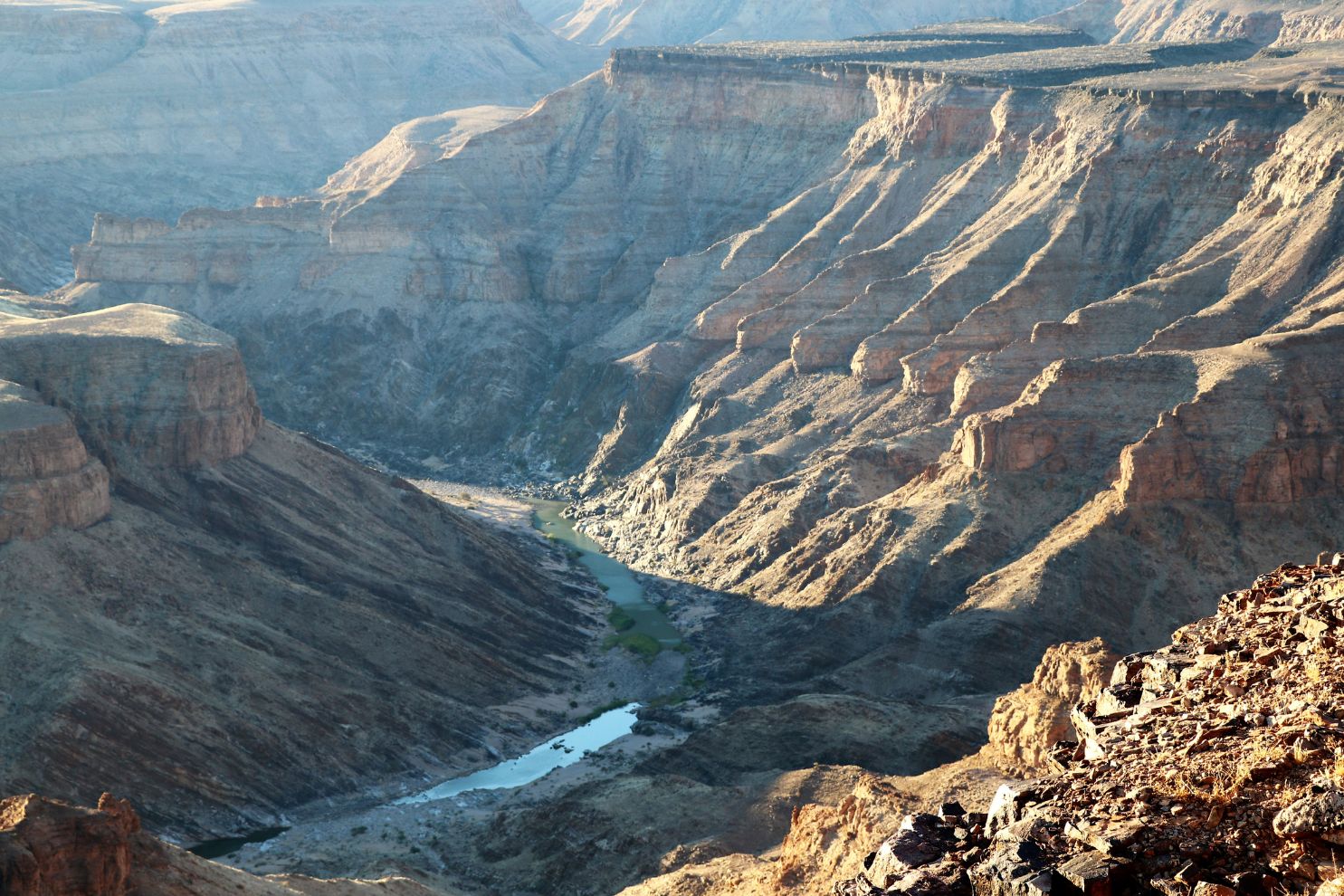
The Great Escarpment comes from the south of the country upwards, lying predominantly in South Africa and Lesotho, and separates the Namib Desert from the Central Plateau in Namibia. Formed around 180 million years ago, the Escarpment is a complex geographical feature best thought of as a mountain range reaching up to 1000m. It runs from the north to the south of Namibia, though gaps in the range have appeared over millions of years.
> Read the day-by-day itinerary for our eight-night cycling adventure in Namibia
The Fish River Canyon, in the very south of Namibia, is the second largest canyon in the world after the Grand Canyon, and is also very spectacular. There are plenty of hikes to be done in the area of the canyon and many of them provide absolutely spectacular views. The canyon is one of the most popular tourists attractions visited on Namibia holidays.
The Bushveld
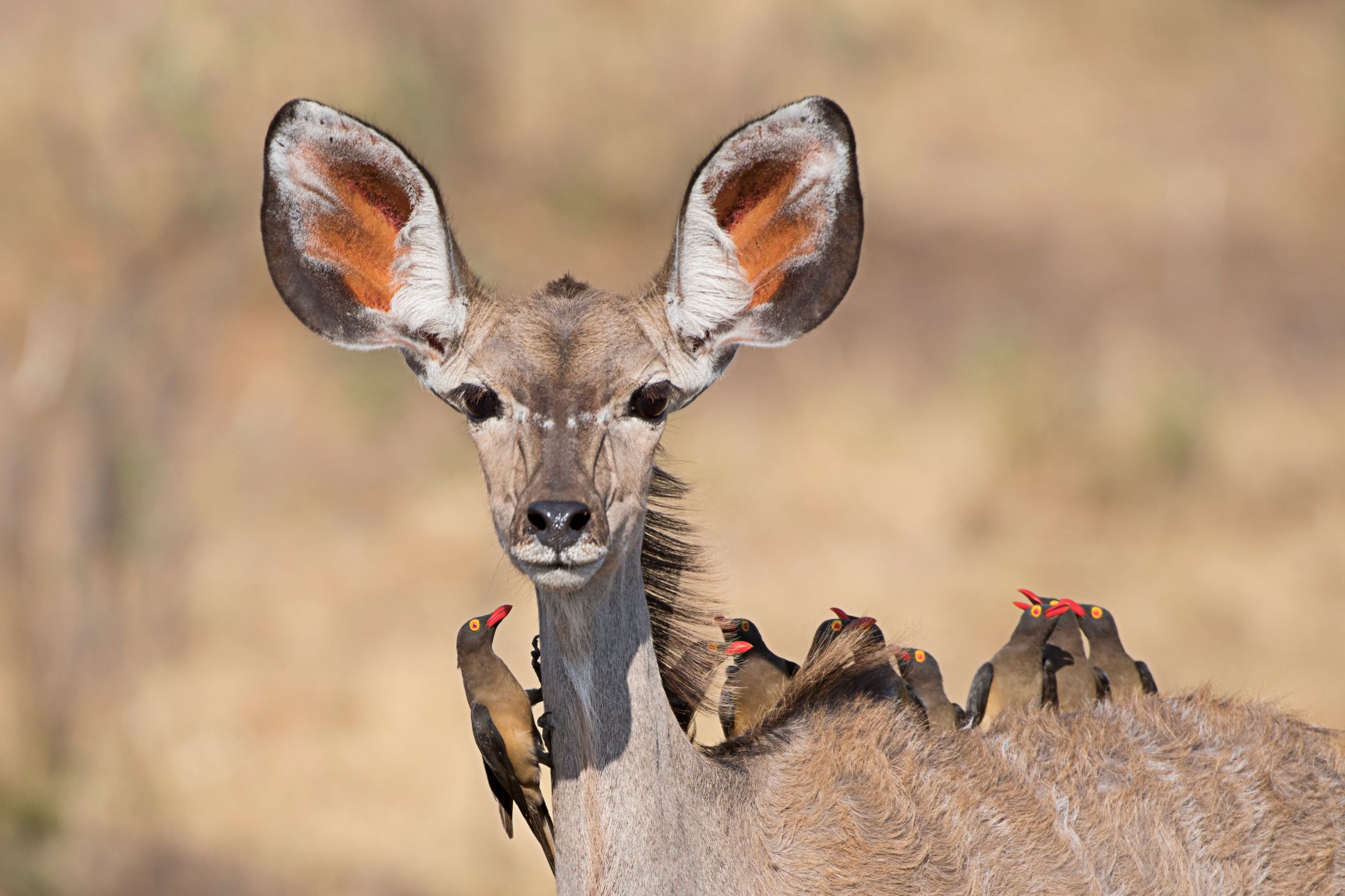
The Bushveld is in the northeast of Namibia along the Angolan border the Caprivi Strip – which is that little sliver in the top right of Namibia which borders Zambia. It receives a greater amount of precipitation than the rest of the country. It’s still no Scottish spring time, though. The average amount of rain is around 400mm per year, so don’t feel the need to pack an umbrella. The area is largely flat and due to sandy soil, not ideal for agriculture. This also means it’s probably not the best part of the country to visit for hiking or cycling.
The Bushveld is home to Caprivi Game Park, a protected area in north eastern Namibia now called Bwabwata National Park. Since 2005 the park has been considered a Lion Conservation Unit along with Khaudum National Park.
The Kalahari Desert
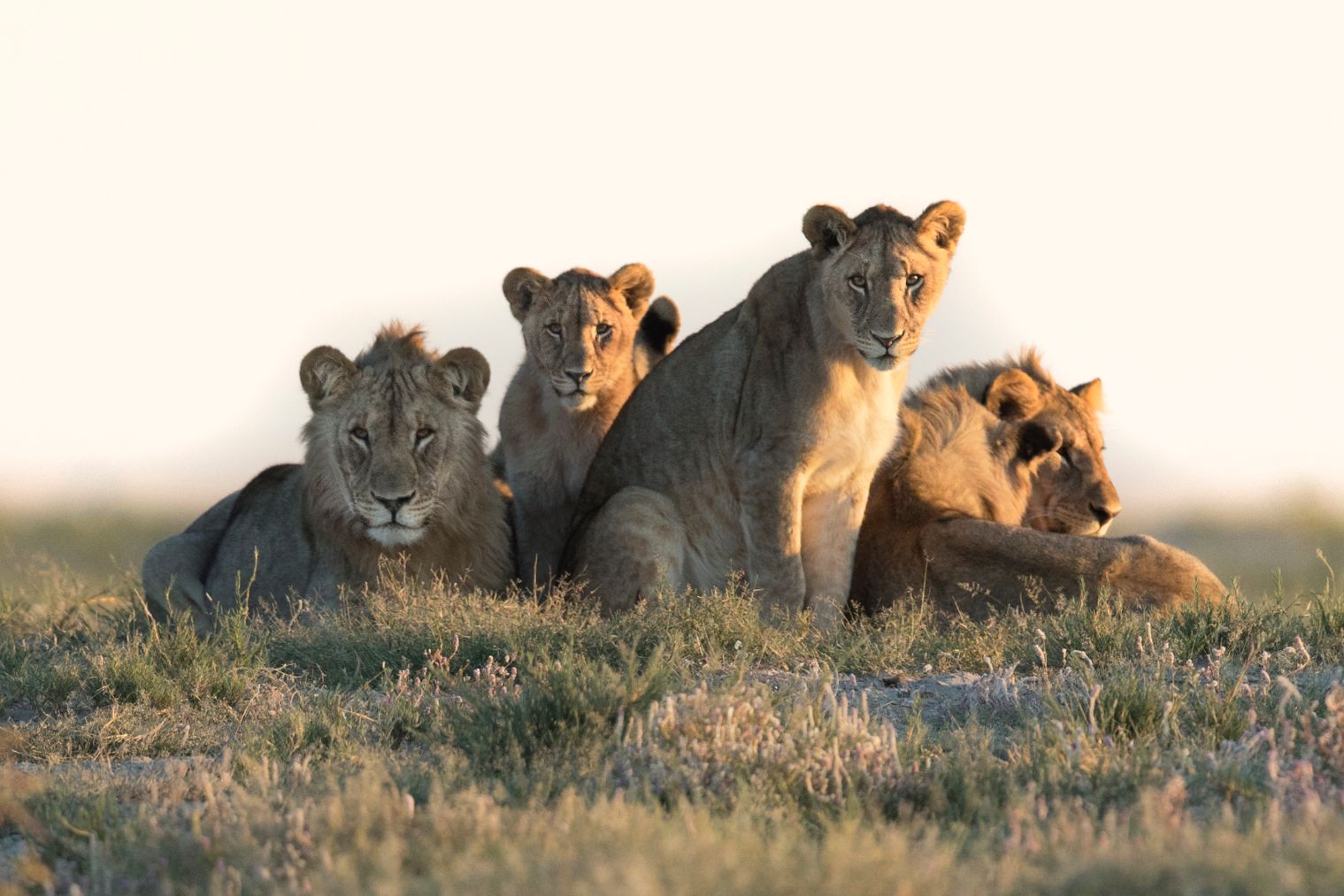
Namibia holidays offer a lot of things, but one of the main bonuses is the wildlife. The Kalahari Desert is no different. The desert extends into South Africa and Botswana. Within it lies the Succulent Karoo, which may sound like a Dr. Seuss character, but is actually a desert ecoregion containing over 5,000 species of plants. Nearly half of them are endemic, too. 10% of the world’s succulents are found here. The Kalahari reaches 900,000 km2 in total. The Okavango river runs through it and there are more animals and plants throughout than in a “true desert”, such as the Namib. The fauna includes the endangered African wild dog, oryx gazella, meerkats, hyena, leopards, cheetah, lions, eagles and an abundance more.
Namibia Holidays: Cycling in Namibia
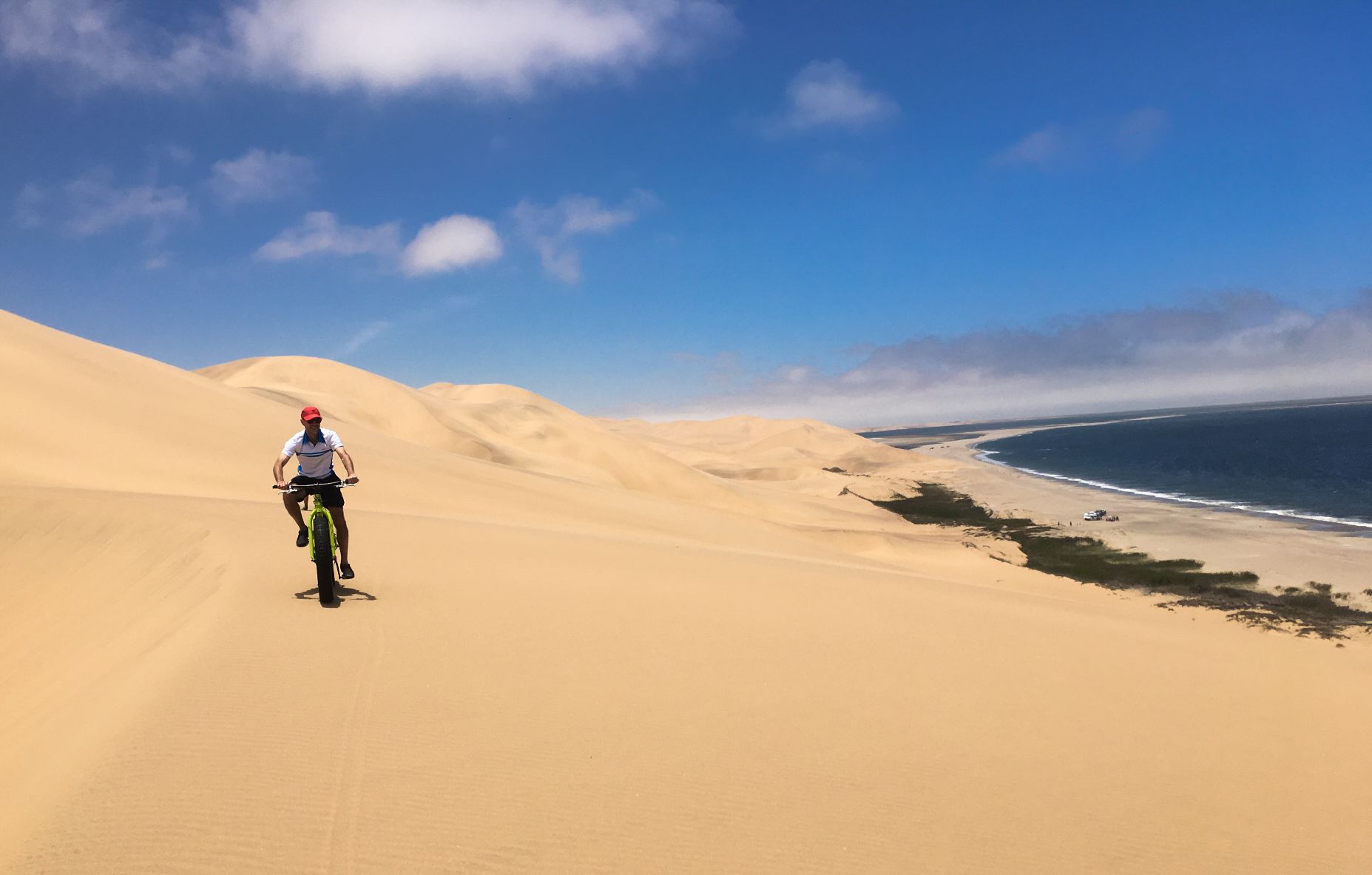
Our eight-night trip to the country is centred around cycling in Namibia. Ride through Namibia’s vast dune desert, and along the Skeleton coast you’ve heard so much about from us above. Starting off in Windhoek, you’ll soon move to Swakopmund, the adventure capital, for an introduction to cycling in Namibi via fat bike. Ride the expansive Namib desert and take in the Moon Valley. Ride to the Spitzkoppe, the “Matterhorn of Namibia”, and cycle to Cape Cross to see those seals. Cycle the Skeleton Coast and pedal up to the Grootberg Pass for views over plains as beautiful as any African country. This is a way to discover cycling in Namibia in style.
> Read the full itinerary for our eight-night cycle in Namibia
Namibia Weather & Best Time to Visit Namibia
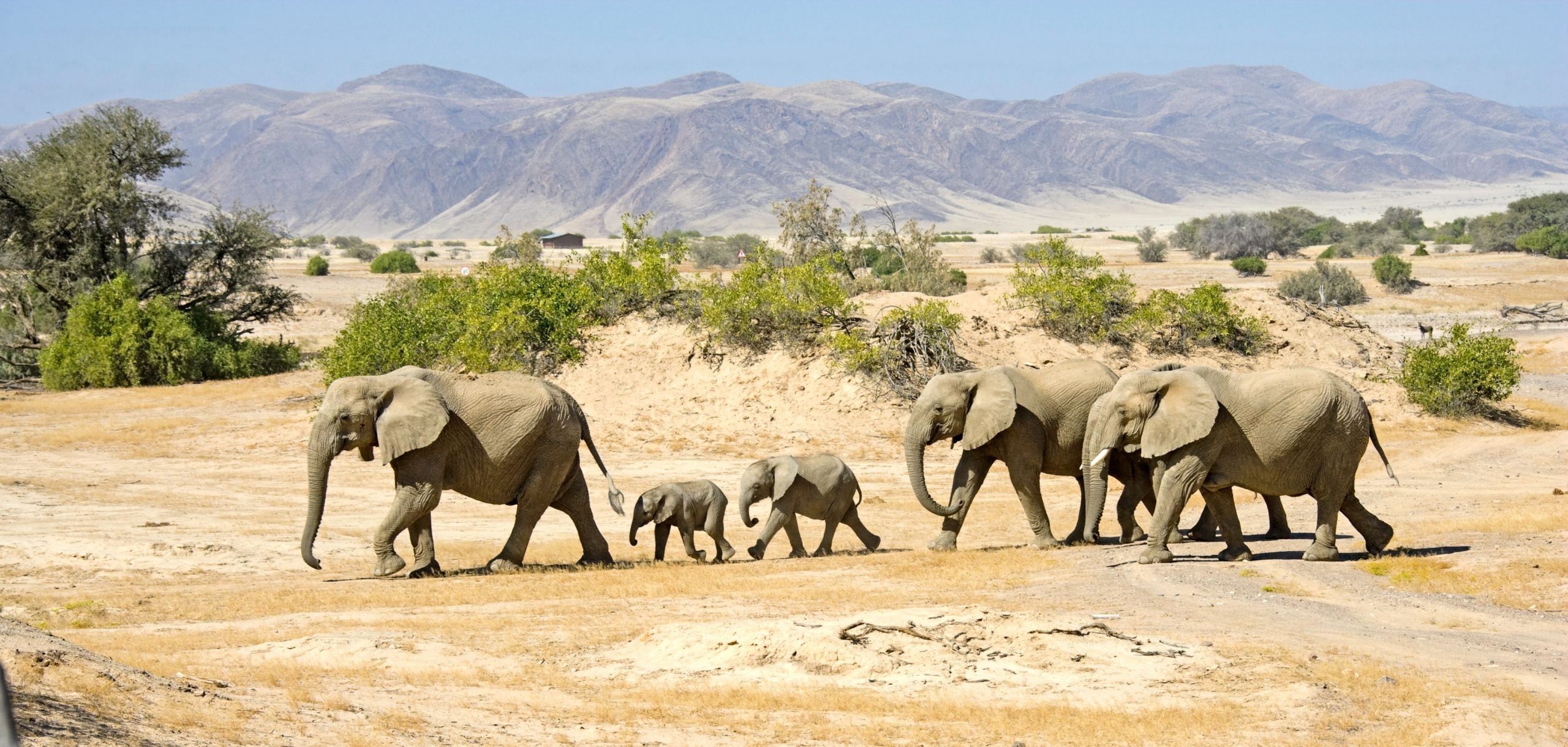
Unless you like your holidays particularly dry and crispy, the best time to visit Namibia is between July and October. The temperatures on Namibia holidays will be around the 20 degree Celsius mark during this time. This is the dry season. As such, with limited water sources, a lot of the wildlife tend to congregate around the water holes in parks such as those in Etosha. This makes wildlife viewing particularly good in these months too. Though truth be told, the country can be visited year round without concern. From late October to April, it’ll be hotter and will be a little more tricky to spot wildlife. Conditions on the Skeleton Coast meanwhile are similar year-round.
> Read the day-by-day itinerary for our nine-night hiking, safari and stargazing adventure in Namibia
Flights to Namibia
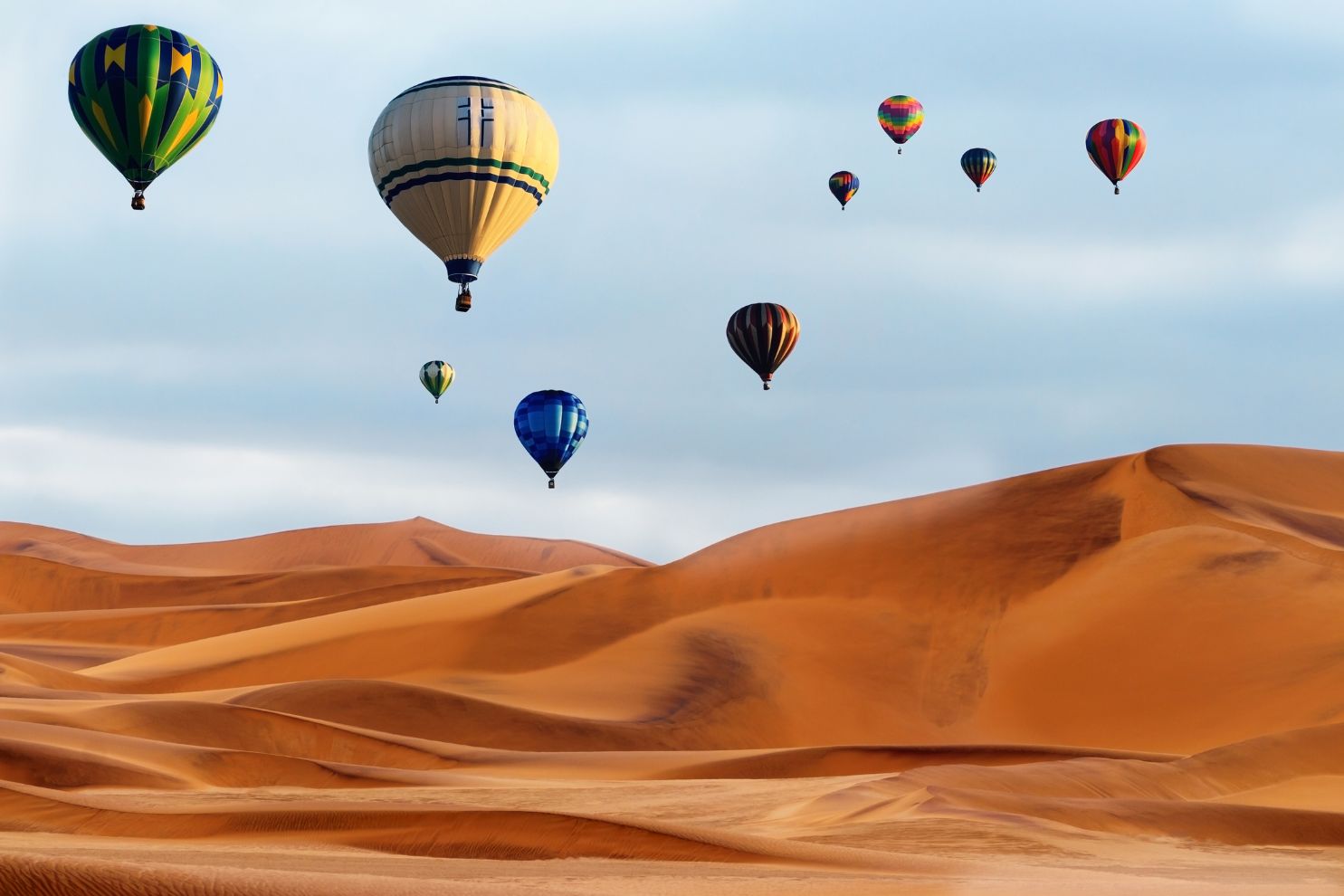
The main international airport in Namibia is Hosea Kutako International Airport and serves the capital city Windhoek. It’s about 45km to the east of the city and, thanks to national airline Air Namibia, connects to other international airports, including Frankfurt in Europe. The most common routes to get to Windhoek are via Frankfurt or via Johannesburg. South African Airways or British Airways are the other airlines often used in these flight plans.
Inspired to see it for yourself? Check out our small group adventures in Namibia.

